A THIRD instalment of the popular Old Ireland in Colour book series has been released this month.
Old Ireland in Colour 3 sees authors John Breslin and Sarah-Anne Buckley return with a host of captivating new images which tell the story of Ireland’s history.
Breslin, a Professor at NUI Galway, and Buckley, an Associate Professor in History at NUI Galway and former President of the Women’s History Association of Ireland, published the first instalment of the successful series in 2020 and Old Ireland in Colour 2 followed in 2021.
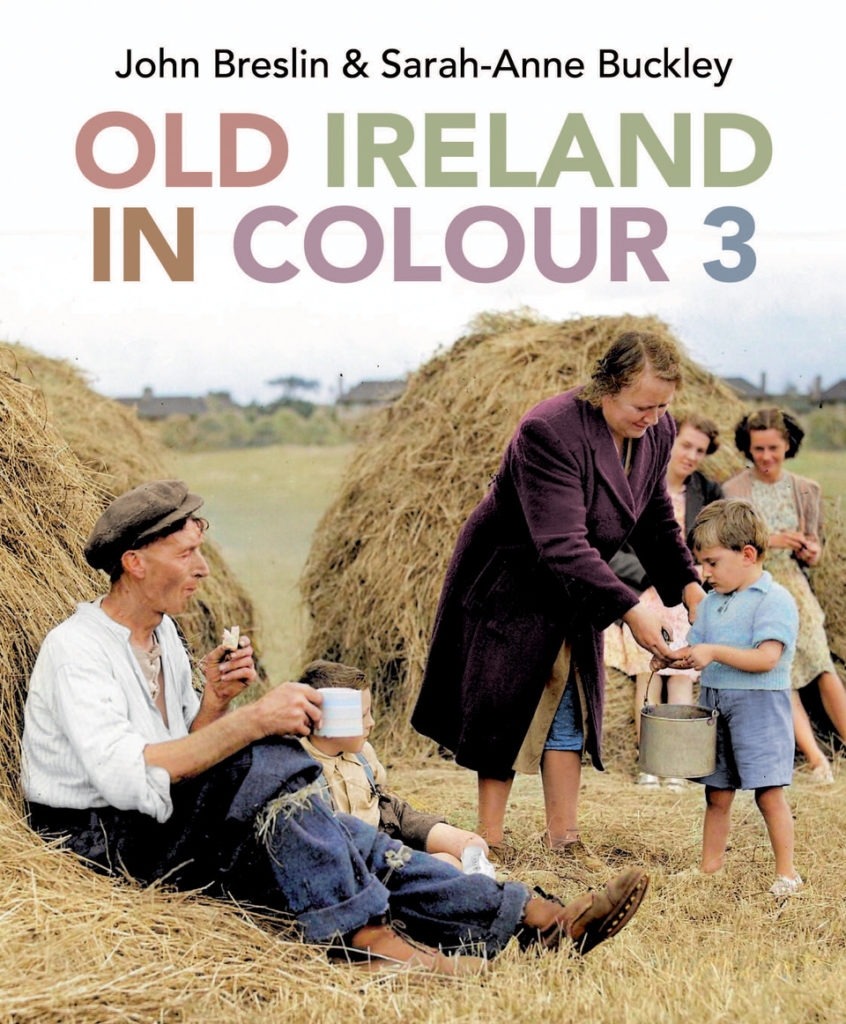 Old Ireland in Colour 3 is published by Merrion Press
Old Ireland in Colour 3 is published by Merrion Press“Beloved by Irish readers at home and abroad, for this new volume the authors have uncovered yet more photographic gems and breathed new life into them in glorious colour,” publishers Merrion Press confirmed this week.
For their 2023 edition the authors have included a wide snapshot of life on the Emerald Isle.
From an eviction in Clare in 1888 to devastating floods in Strabane and an insight to working life in Dublin, all aspects of day to day lives gone by are featured.
There are also famous faces from politics and the arts within the book, alongside hard-working labourers and farmers, as well as mischievous children from all corners of the island who light up the book’s pages.
“With endless surprising details to pore over in every picture, along with illuminating captions, Old Ireland in Colour 3 is a stunning addition to this wonderful series of unique books,” the publishers add.
Here is a selection of the images from the book…
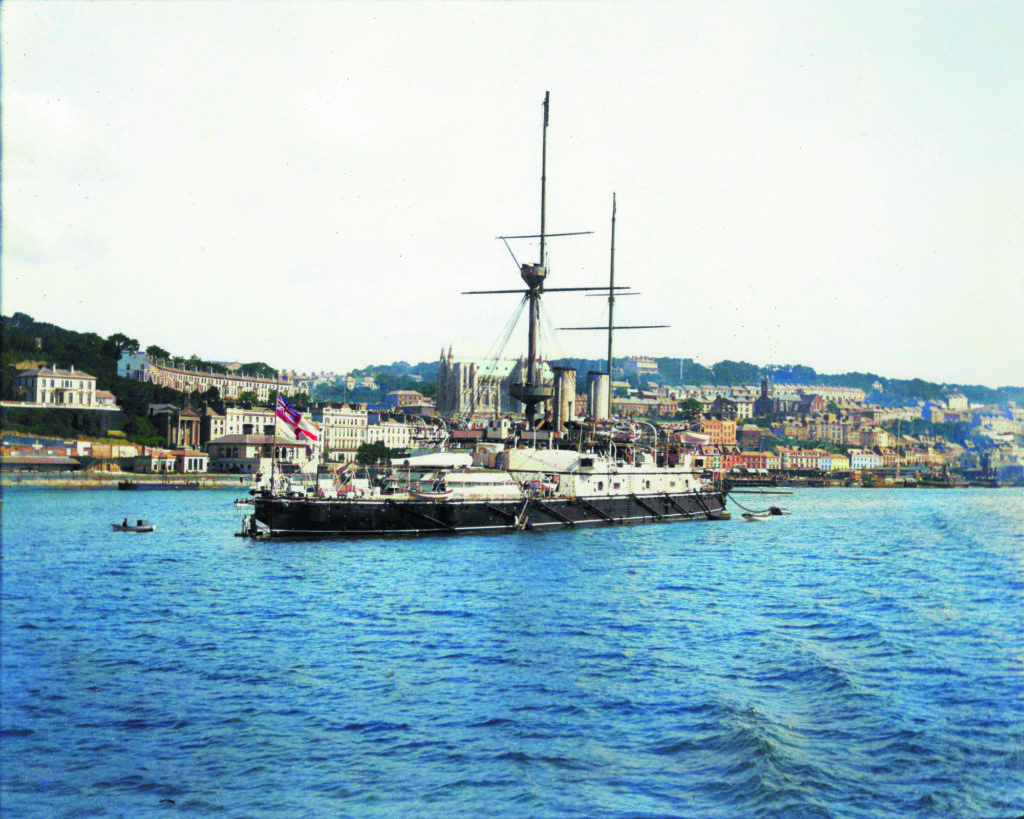 HMS Howe in Queenstown (Pic: Old Ireland in Colour 3)
HMS Howe in Queenstown (Pic: Old Ireland in Colour 3)HMS Howe in Queenstown
c.1898, Cobh (then Queenstown), Co. Cork
The HMS Howe in Queenstown, now Cobh. Flags have been recoloured as per the White Ensign, flown by all Royal Navy vessels unless they are doing trials or are not in commission. At the front
of the ship two people are standing in a small boat, likely painting the bow. The HMS Howe was an Admiral-class ironclad battleship built for the Royal Navy during the 1880s. She ran aground in 1892 but was re·oated after repairs were made. In 1896, she became a guardship in Ireland and stayed there until 1901. In the background of the image St Colman’s Cathedral is visible, but without its famous spire, which was not built at this point. Started in 1868, the cathedral took forty-seven years to complete.
Photographer: Unknown; Source: the Breslin Archive
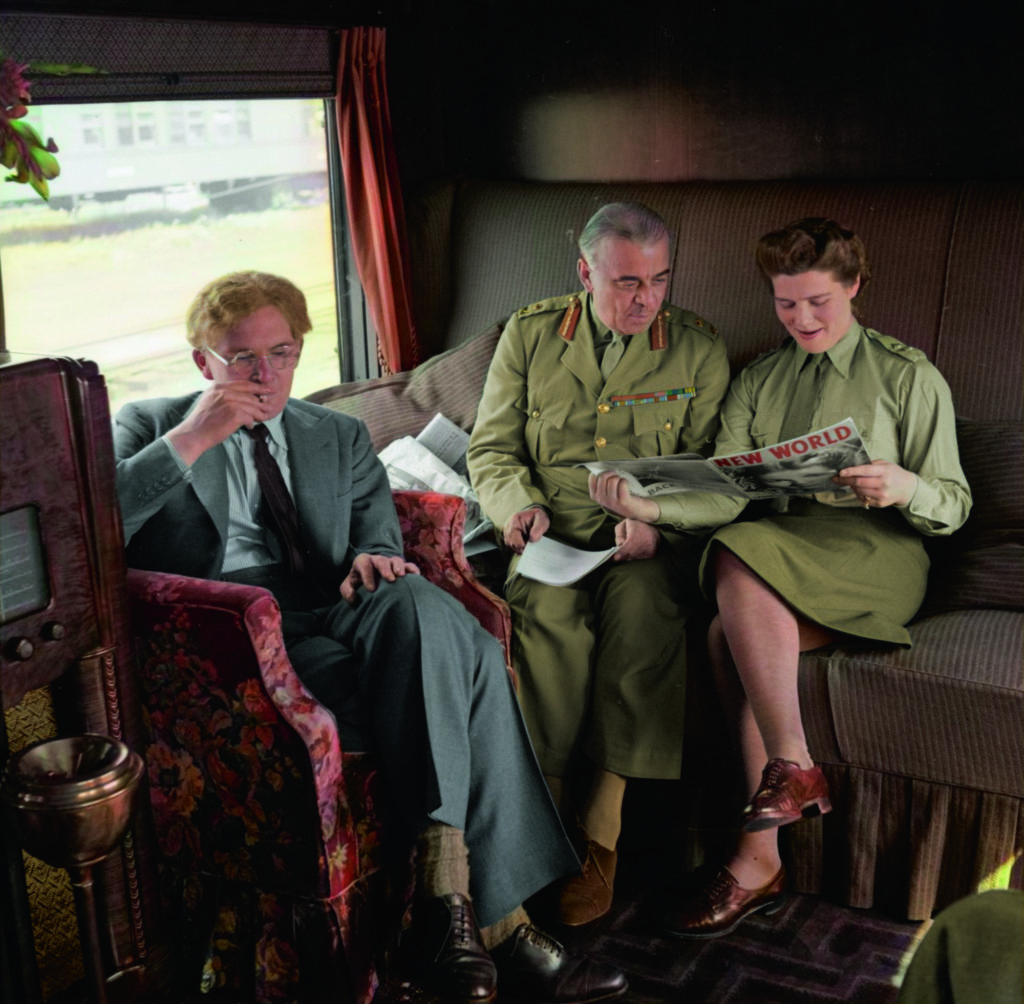 Churchil's Spin Doctor (Pic: Old Ireland in Colour 3)
Churchil's Spin Doctor (Pic: Old Ireland in Colour 3)Churchill’s Spin Doctor
1943, USA
Brendan Bracken was Winston Churchill’s closest friend and Minister for Information in his wartime cabinet. Pictured here with Baron Ismay and Mary Churchill, very few knew of Bracken’s Irish background due to the many stories he spun about himself in his youth.
Bracken’s father was a prosperous Templemore builder, a Fenian and a founding member of the GAA. After his death, Bracken lived on the northside of Dublin with his mother before leaving for Australia in 1916.
In the UK in the 1920s, Bracken established himself in publishing, founding the Banker magazine for his firm, and then built up a group of quality news publications, including the Financial News (later to merge with the Financial Times) and The Economist.
In politics, the imperialist Bracken attached himself to Churchill, and their friendship developed when he acted as Churchill’s campaign manager in 1923.
In 1929 Bracken himself was elected MP for North Paddington.
A master spin doctor decades before the term was invented, during the Second World War he wooed the press privately and in conference with titbits of inside information and kept censorship to a minimum.
He remained close to Churchill until the latter’s stroke in 1953. Bracken died of cancer in 1958.
Photographer: Major W.G. Horton; Source: IWM
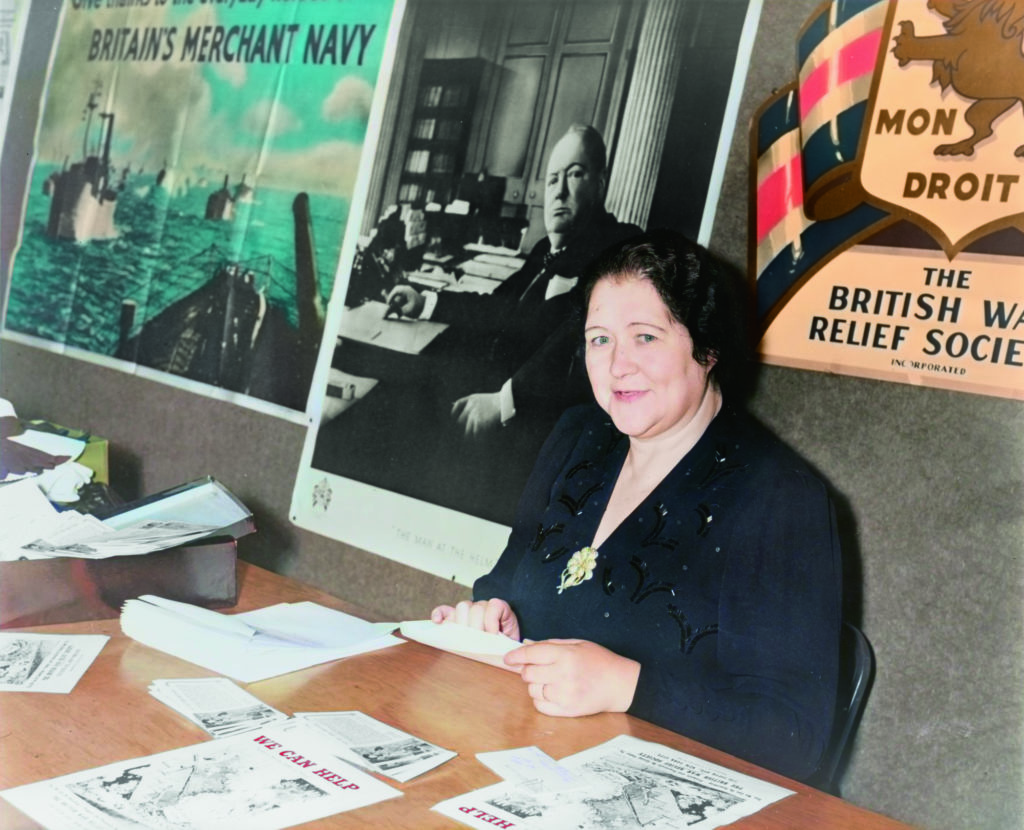 Brigid Dowling Hitler (Pic: Old Ireland in Colour 3)
Brigid Dowling Hitler (Pic: Old Ireland in Colour 3)Brigid Dowling Hitler
1941, New York
Bridget Stuart-Houston (née Dowling) was born in July 1891 and was, for a time,
known as Bridget Hitler, sister-in-law to Adolf Hitler. From the 1901 Irish census, we know that she grew up at Fleming Place, near Mespil Road, Ballsbridge.
Her memoir states that she met Alois Hitler at the Dublin Horse Show in 1909. They eloped to London in 1910 and had a son, William Patrick, in 1911.
However, Alois could not support the family and fled back to Germany in 1914 to avoid debts he had built up. He fought in the First World War and later married bigamously, for which he was charged but not imprisoned.
William Patrick visited his father in Germany in 1929 and returned there in 1933 when his uncle Adolf became chancellor. Relations soured and he returned to the UK, where he gave lectures on his ‘madman’ uncle.
In 1939, he and Bridget went to the USA, where this photograph was taken.
William Patrick served in the American navy and was honourably discharged in 1947. Following the war, Bridget and her son assumed the name Stuart-Houston.
They settled on Long Island where Bridget died in 1969 and William Patrick in 1987.
Photographer: New York World-Telegram and the Sun; Source: Library of Congress
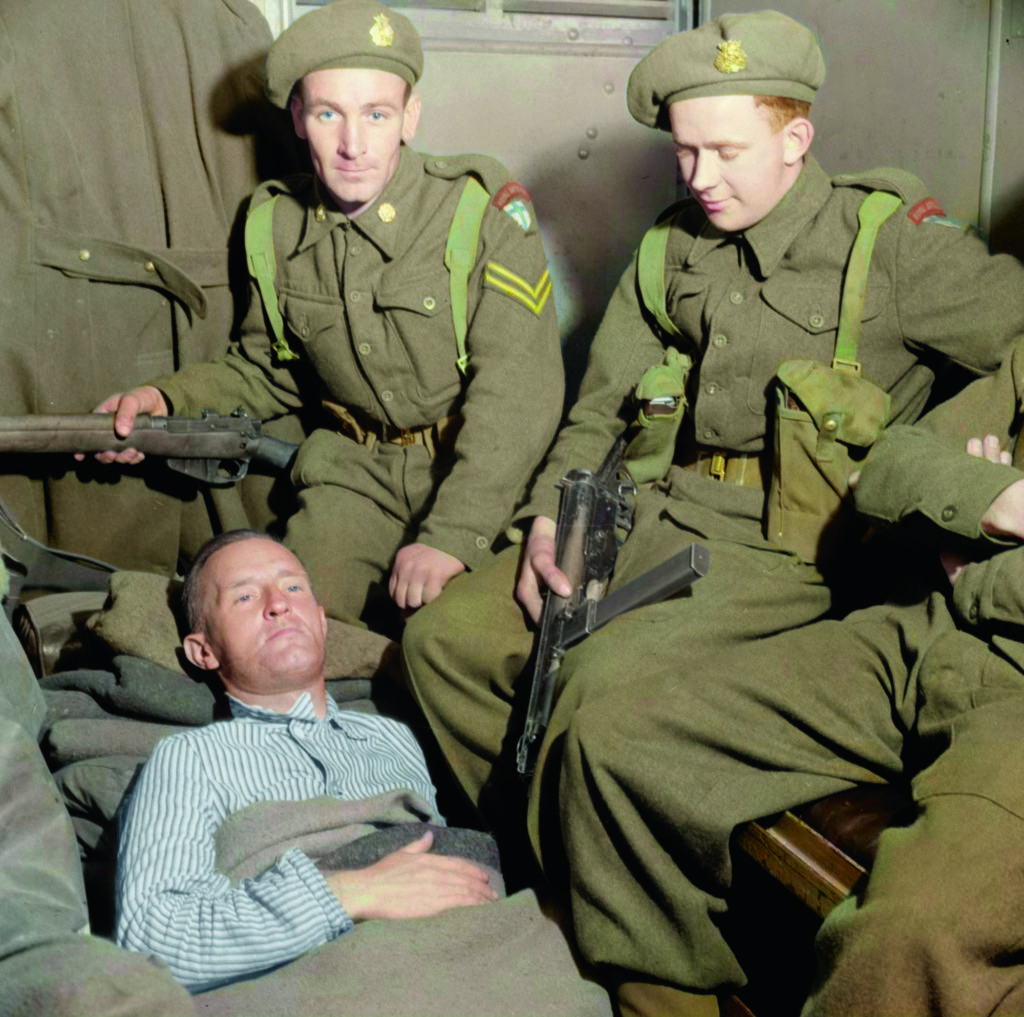 Lord Haw Haw (Pic: Old Ireland in Colour 3)
Lord Haw Haw (Pic: Old Ireland in Colour 3)Lord Haw Haw (photo captured by British soldiers)
29 May 1945, Flensburg, Germany
Fascist politician and Nazi propaganda broadcaster William Joyce, known as Lord Haw-Haw, lies in an ambulance after his arrest by British soldiers at Flensburg, Germany.
He was wounded during the arrest and executed in January 1946. Enda Delaney described him as ‘a vile man: a wife-beater, pro-Nazi fascist, womaniser, narcissist, heavy drinker, manipulator and liar’.
Born in New York to Irish parents, he lived in Galway from 3 years of age. A collaborator with the Crown forces during the War of Independence, he was almost assassinated.
He fled to England and became engaged with fascism, joining Oswald Mosley’s British Union of Fascists in 1932.
In 1939 he moved to Germany and was recruited by Joseph Goebbels’ Reich Ministry of Public Enlightenment and Propaganda and given his own radio show, which he always began with ‘Germany Calling, Germany Calling, Germany Calling’.
British audiences found the show, and Joyce’s dramatic, fiery oratory, entertaining; he was given the nickname ‘Lord Haw-Haw’ by the British press.
By 1940, it was estimated that he had 6 million regular and 18 million occasional listeners in the UK.
Although initially buried in an unmarked grave in the grounds of the prison where he was executed, in 1976 his daughter petitioned to have the body exhumed and interred in Bohermore, Co. Galway, where his grave remains to this day.
Photographer: Sergeant Bert Hardy; Source: IWM
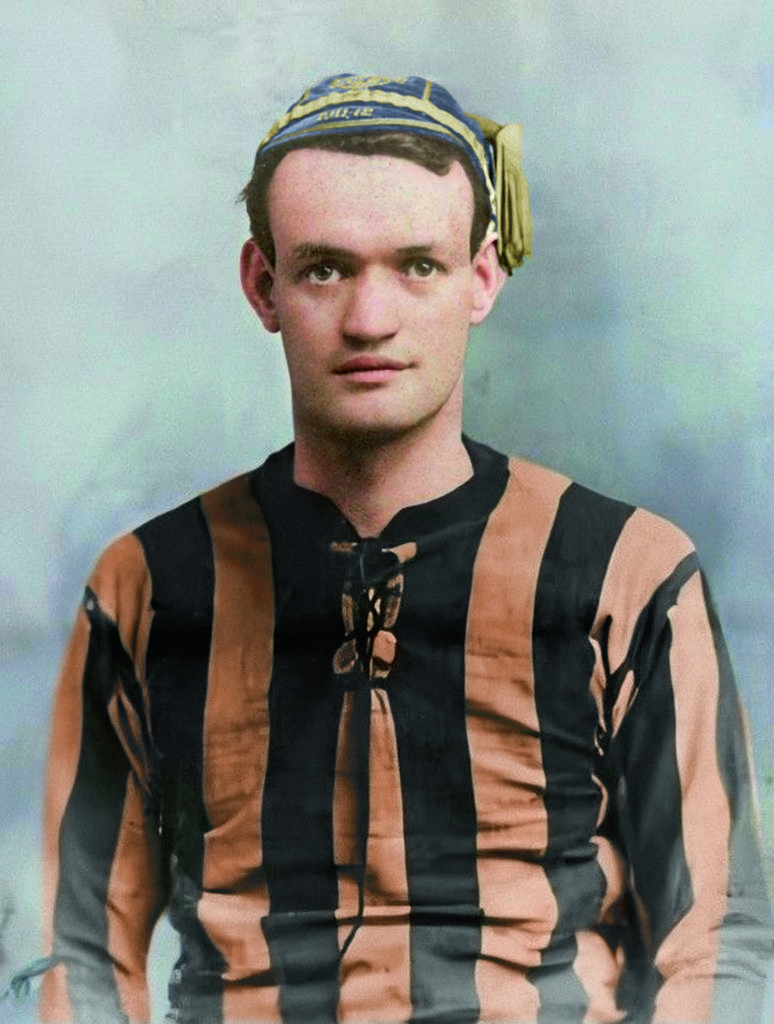 The Irish Saviour of FC Barcelona (Pic: Old Ireland in Colour 3)
The Irish Saviour of FC Barcelona (Pic: Old Ireland in Colour 3)The Irish Saviour of FC Barcelona
1912, England
Patrick (Paddy) O’Connell is seen here wearing a 1911–12 international cap and his Hull City shirt.
Born in 1887, O’Connell grew up in Dublin and had a successful playing career with Belfast Celtic, Hull City, Sheffield Wednesday and Manchester United.
The First World War essentially ended his career and, upon retiring from playing, he took on the role of football manager for Ashington
AFC. In 1922, he left his family (wife Ellen and four children) to work in Spain, where he became manager of Racing de Santander, Real Oviedo and then Real Betis de Sevilla. In 1935, ‘Don Patricio’, as he was known, managed Betis to their only La Liga title success, as well as bigamously marrying his second wife.
He then moved to FC Barcelona and is often credited with having saved the team from financial ruin during the Spanish Civil War, having led a trip to Mexico and New York in 1937. The money from the games played there ensured the club’s survival. However, while accepting that
O’Connell led the team to America, some locals, such as Professor Carles Viñas of the University of Barcelona, claim that he did not actually organise it, so cannot be considered the club’s ‘saviour’.
In later life O’Connell moved to London, where he died of pneumonia in 1959 and is buried in St Mary’s Catholic Cemetery in Kensal Green.
Photographer: Unknown; Source: Wikimedia Commons
Old Ireland in Colour 3 is available to purchase now, published by Merrion Press

